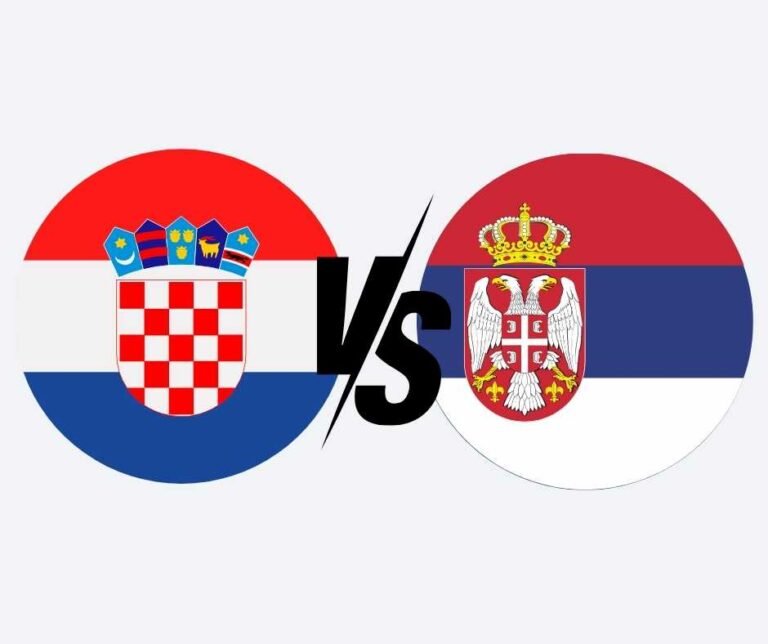Written by: Olivera Tolimir
Prepositions are short words that show relations between words in a sentence. In English, these words are: in, on, at, from, to, etc. They seem so small and harmless, don’t they?
Ahem, think again.
These tiny troublemakers are often forgotten when naming difficult things about learning a foreign language. Ninety percent of people will list grammatical cases, gender, pronunciation, and the Cyrillic alphabet as the most challenging parts of learning Serbian. Or at least two out of three. Most don’t even remember Serbian prepositions.
But Serbian teachers are well aware their students usually struggle with prepositions. So, why don’t students themselves consider it an issue?
It’s a great question! The best guess is they aren’t even aware of those mistakes since they don’t have that much trouble speaking Serbians if they’re unsure about a preposition, compared to being clueless about a grammatical case in a sentence. People often slip any preposition they find fit in a sentence and hope for the best.
The same preposition can be used in various Serbian cases depending on the meaning. For example, the preposition u (in, into) is used with Locative when showing location and with Accusative when showing direction.
But today, we’ll make Serbian prepositions a non-issue for you! Keep reading to find a list of the thirteen most common Serbian prepositions and ways to use them.

The Serbian Preposition U
The Serbian preposition u (in English usually: in, into, but it can have other meanings) is one of the first you’ve learned after starting to learn Serbian. We mostly use it to show location, direction, and time.
Location
When using the preposition u to show location, we use it with the seventh Serbian case, Locative:
- Radim u bolnici. (I work in a hospital.)
We also use it to say literally an object is inside another object, for example:
- Hrana je u frižideru. (The food is in the fridge.)
Direction
The Serbian preposition u with Accusative show direction:
- Sutra putujemo u Francusku. (We travel to France tomorrow.)
We use the preposition u to show location and direction when something is inside the closed walls (school, building, house, hospital, museum…).
Time
The preposition u with Accusative can also show time:
- Dobićete imejl u utorak. (You’ll get an e-mail on Tuesday.)
- U pet sati počinje film. (The movie starts at five o’clock.)

The Serbian Preposition NA
We use the preposition na (English: on, at) to show surface, location, direction, and time (if we talk about seasons or holidays).
Surface
Out of all Serbian prepositions, na is the only one that helps explain that an object is on a particular surface. For example:
- Tanjir je na stolu. (The plate is on the table.)
Location
Many Serbian prepositions help us express location, but the first ones you’ll learn are u and na. They both go with Locative. The preposition na shows that we are:
- in open space
- at a particular height
- at an event.
For example:
- Moram da kupim paradajz i krompir na pijaci. (I must buy tomatoes and potatoes at the market.)
- Odmaramo se na Kopaoniku. (We’re resting on Kopaonik.) *Kopaonik is a mountain in Serbia.*
- Na koncertu je bilo savršeno! (It was perfect at the concert!)
Direction
Just like the Serbian preposition u, the preposition na can be used to show both location and direction. When we want to express direction, we use it with Accusative.
For example:
- Idi na pijacu i kupi višnje! (Go to the market and buy cherries!)
- Jesu li Ana i Dejan već otputovali na Kopaonik? (Have Ana and Dejan traveled to Kopaonik already?)
- Da li ideš na koncert sutra? (Are you going to the concert tomorrow?)
Are you still unsure whether to use the preposition “u” or “na” when speaking of direction and location? Check out our blog post about five rules to help you distinguish the use of the prepositions “u” and “na”!
Time
Another way to say when something happened is to connect it with some holiday or season. In these cases, we use the Serbian preposition na and Accusative. For example:
- Milena će nas posetiti na jesen. (Milena will visit us in autumn.)
- Posvađali su se na Božić! (They argued on Christmas!)

Other Serbian Prepositions for Location: PORED, ISPRED, IZA, ISPOD, IZNAD
Here’s a group of classic Serbian prepositions that specify a location. They all go with Genitive.
These are their meanings:
- pored – next to
- ispred – in front of
- iza – behind
- ispod – below
- iznad – above.
Here are some examples:
- Stavi vazu pored činije. (Put the vase next to the bowl.)
- Pogledaj iznad sebe! (Look above you!)
Serbian Prepositions for Stores and Restaurants: OD & DO
Serbian prepositions od and do aren’t used solely by restaurants and shops. But you’ll see them most often at the door of these places. Their meanings are:
- od – from
- do – to.
They both go with Genitive:
- Radimo od ponedeljka do petka. (We work from Monday to Friday.)
- Od početka nedelje je bolesna. (She’s been sick from the beginning of the week.)
The Serbian preposition od can have other meanings, too. For example:
- Dobio je poklon od sestre. (He got a gift from his sister.)
- Moj omiljeni slatkiš je kolač od jagoda. (My favorite dessert is a strawberry cake.)
Genitive is the most complex Serbian case. Check if you’ve been using the preposition od correctly.

The Serbian Preposition S(A)
The Serbian preposition s(a) means with or from. It can be used to show:
- company
- motion away from something.
Company
When used to show company, the preposition s(a) goes with Instrumental. For example:
- Često se družim s Helenom. (I often hang out with Helena.)
If you wonder whether to use the preposition sa in Instrumental or to leave it prepositionless, check out the blog post dedicated to the dilemma.
Motion
In this case, the preposition is used with Genitive. It has an ablative meaning. For example:
- Pao je s merdevina. (He fell off the ladder.)
- Sišli smo sa stepenica. (We came down the stairs.) *There isn’t a preposition in the English translation.*
The Serbian Preposition O
The preposition o has various meanings, but its most common translation is about. In this case, it’s used with Locative. For example:
- Mislim o svojoj porodici. (I’m thinking about my family.)
The Serbian Prepositions SEM & OSIM
The Serbian prepositions sem and osim have the same meanings. They can be translated as except or beside. They’re used with Genitive. For example:
- Svi su stigli na vreme, osim/sem Milana. (Everyone arrived in time except Milan.)
- Nisam pozvala nikoga osim/sem vas. (I haven’t called anyone beside you).
If you’re unsure about other Serbian prepositions, check out our free list of Serbian prepositions with examples!



